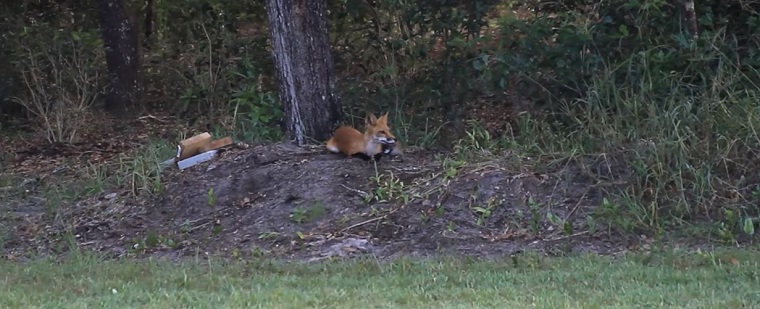-
info@aaanimalcontrol.com
Call us for help in your town
Humane Wildlife Education
Tips on How To Trap A Fox
Need fox removal in your hometown? We service over 500 USA locations! Click here to hire us in your town and check prices - updated for year 2020.
Trapping a fox CAN be an effective way to get rid of a fox from a property, but it doesn’t solve the entire problem. Removing the animal is only a tiny part of what will end up being a much bigger process, and that's the one thing that many home and business owners are not aware of when they first begin this journey.

By just removing a fox by way of a trap-and-release mission, the fox is free to come back. There will still be nothing to stop it coming right back to your land, and getting right back into whatever hole you managed to lure it out of. It will still poop all over your garden. It will still spread disease around, just like nuisance wildlife does. It will still annoy your cats and dogs, and go after your pet rabbits, guinea pigs, or chickens.
Trapping a fox will only work if you the rest of the work that goes along with, and this will usually involve erecting a fence around your property or repairing the one that you already have, using chicken wire or hardware cloth to protect areas underground, trees, as well as structures, such as the chicken coop.
You will also need to clean up after the fox has gone, and you’d be amazed by how messy these creatures can be. There’s the urine and feces to start with, and if you don't get rid of that, the stench will soon start to attract other critters. The original fox might come back, able to smell its own scent in the area, or another fox may come along and investigate. Rats and other rodents often are attracted to the mess and waste of other animals and people. The same things will attract flies and all sorts of other bugs too. It won’t be pleasant, and that’s before you get to the smell. Wild animals are not only messy, but stinky too. They don’t care much for hygiene either.
Alongside erecting fences and clearing up after the fox, you will also need to look at other preventative measures that you can take. If you don’t, you’ll just be trapping and releasing the same or different foxes all the time. The problem still isn’t solved.
You should tidy up your land. Don’t leave garbage bags lying around, because rats, raccoons, foxes, and other creatures will tear them apart to get to the leftovers you would rather not eat. A metal trash can is the best option, with a lid that you can secure in place. Even if the creature were to be able to knock the trash can over, they still wouldn’t be able to get to the goodies inside.
Bird feeders should be looked at. Can it be modified to ensure that the food isn't being dropped to the ground below, attracting rodents, squirrels, opossums, skunks, raccoons, foxes, and more? You shouldn’t leave food out in your yard for ANY animal, whether that's a domesticated animal or a wild one. You can't be sure that the right animal is eating the food, and that's the first thing to draw in nuisance wildlife, in their droves.
Even growing foods can be protected. There are many trees, shrubs, and flowering plants, as well as fruits, vegetables, and herbs that are attacked by foxes. If these plants are in one area, you can protect them using a fencing system that sits both above the ground and below. Foxes are well known for digging, so any fences that you erect must have a foot-or-more layer of wire protection below ground.
Trapping a fox is well known to be quite the difficult task, especially if you're talking about more than one fox, or if you don't really know what you're doing. It also only deals with a tiny part of the problem, still allowing other creatures, as well as other foxes, to come right back into the hole that this one has left behind, causing you all sorts of problems once again.
Read aboutHow to get rid of fox
For more information, you may want to click on one of these guides that I wrote:
How To Guide: Who should I hire? - What questions to ask, to look for, who NOT to hire.
How To Guide: do it yourself! - Advice on saving money by doing wildlife removal yourself.
Guide: How much does wildlife removal cost? - Analysis of wildlife control prices.
Animals in the attic - read about the common species.
Noises in the attic - how to identify critters by their sounds.


















